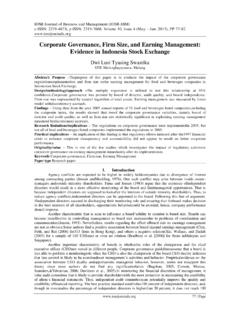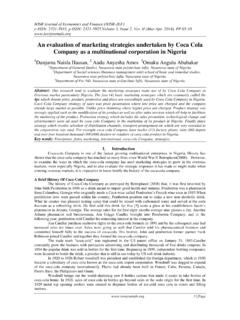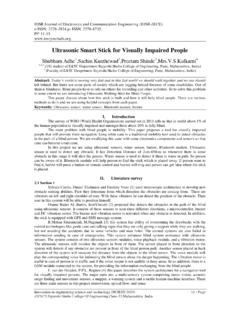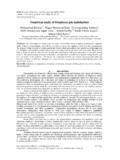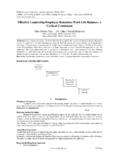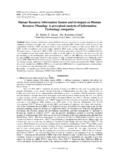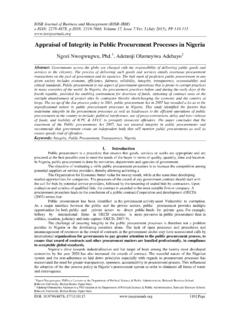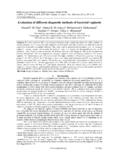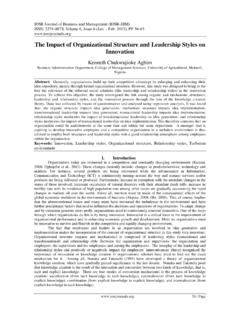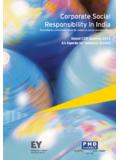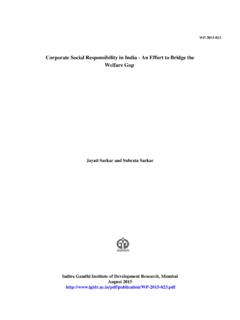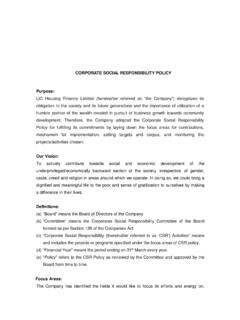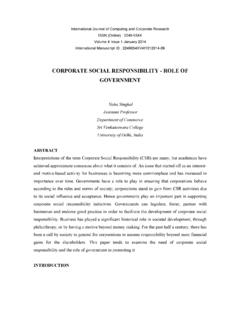Transcription of Corporate Social Responsibility: A Case Study Of …
1 IOSR Journal of Business and Management (IOSRJBM). ISSN: 2278-487X Volume 3, Issue 5 (Sep,-Oct. 2012), PP 17-27. Corporate Social responsibility : a case Study Of TATA Group Amit Kumar Srivastava1, Gayatri Negi2, Vipul Mishra3, Shraddha Pandey4. ( 1,4. Shri Ram Murti Smarak College of Engineering & Technology, Bareilly, U P/India ). ( 2 ,3. Career Degree College, kakori, Lucknow /U P / University of Lucknow / India). Abstract: Starting from the times of barter system to today's modern era of plastic money, the mankind has trodden a remarkably long path. Undoubtedly profitability has always been the driving force and an undercurrent behind all this development; but as every coin has two facets; growing cut throat competition and business rivalries started taking heavy toll on the quality, transparency, environment and the society in general endangering the peaceful coexistence of business and society.
2 The businesses houses started realizing that they would have to rise over and above the profitability and take care of all those associated with their survival in the society directly or indirectly. This realization resulted into the concept of Corporate Social responsibility (CSR). This research paper moves around developing an understanding about the Corporate Social responsibility (CSR), delving into its concept and finding out its scope taking the case Study of the TATA Group under Mr. Ratan Tata who has exemplified the sense of responsibility towards the upliftment of common masses and protection of the environment and development of the nation. Keywords: Corporate citizenship, Corporate Social responsibility , Employee, Productivity, Profitability, Society, Stakeholders.
3 I. Introduction Literature Review The concept of CSR originated in the 1950 s in the USA but it became prevalent in early 1970s . At that time US had lots of Social problems like poverty, unemployment and pollution. Consequently a huge fall in the prices of Dollar was witnessed. Corporate Social responsibility became a matter of utmost importance for diverse groups demanding change in the business. During the 1980 s to 2000, corporations recognized and started accepting a responsibility towards society. Corporate Social responsibility (CSR) focuses on the wealth creation for the optimal benefit of all stakeholders including shareholders, employees, customers, environment and society. The term stakeholder, means all those on whom an organization's performance and activities have some impact either directly or indirectly.
4 This term was used to describe Corporate owners beyond shareholders as a result of a book titled Strategic management: a stakeholder approach by R. Edward Freeman in the year 1984. 1. According to Bowen, CSR refers to the obligations of businessmen to pursue those policies to make those decisions or to follow those lines of relations which are desirable in terms of the objectives and values of our society. 2 Frederick (1960) stated Social responsibility means that businessmen should oversee the operation of an economic system that fulfills the expectations of the people.. 3 Davis (1960) argued that Social responsibility is a nebulous idea but should be seen in a managerial context. He asserted that some socially responsible business decisions can be justified by a long, complicated process of reasoning as having a good chance of bringing long-run economic gain to the firm, thus paying it back for its socially responsible outlook (p.)
5 70). 4 An ideal CSR has both ethical and philosophical dimensions, particularly in India where there exists a wide gap between sections of people in terms of income and standards as well as socio-economic status (Bajpai, 2001) 5. Goyder(2003) argues: Industry in the 20th century can no longer be regarded as a private arrangement for enriching shareholders. It has become a joint enterprise in which workers, management, consumers, the locality, govt. and trade union officials all play a part. If the system which we know by the name private enterprise is to continue, some way must be found to embrace many interests whom we go to make up industry in a common purpose. ). 6 CSR implies some sort of commitment, through Corporate policies and action.
6 This operational view of CSR is reflected in a firm s Social performance, which can be assessed by how a firm manages its societal relationships, its Social impact and the outcomes of its CSR policies and actions (Wood, 1991). 7. Purpose To understand the concept and scope of Corporate Social responsibility and getting an insight in CSR. practices in the light of the case Study of the TATA Group. 17 | Page Objectives of the Study To understand the concept of CSR. To find out the scope of CSR. To know how the Tata group has fulfilled its responsibility towards all stakeholders; what specific activities, programs and strategies it has set, devised and implemented for the same. Research Methodology Exhaustive literature survey regarding the topic and related concepts has been done.
7 Secondary data inclusive of quantitative and qualitative data as well collected from various sources including books, research papers, newspapers, magazines, and websites is used for the purpose of Study . II. Concentric Circle & CSR. In 1971, the Committee for Economic Development issued a report throwing light on different dimensions of responsibilities to be fulfilled by the Corporate . The responsibilities of corporations are described consisting of three concentric circles. (a) Inner Circle: Clear cut, basic responsibilities for the efficient execution of the economic function, products, jobs and economic growth. (b) Intermediate Circle: Encompasses responsibility to exercise this economic function with a sensitive awareness of changing Social values and priorities.
8 Eg. With respect to environmental conservation, hiring and relations with employees, expectation of customers for information, safety factors, etc. (c) The Outer Circle: Newly emerging and still amorphous responsibilities that business should assume to become more broadly involved in actively improving the Social environment. III. Classification of Social responsibility responsibility towards itself It is the responsibility of each Corporate entity run business and to work towards growth, expansion and stability and thus earn profits. If the corporation is to achieve Social and economic ends, organizational efficiency should be boosted up. responsibility towards Employees Employees are the most important part of an organization.
9 Following are some of the responsibilities which a business entity has towards its employees- Timely payment Hygienic environment Good and impartial behavior Health care through yoga Recreational activities Encouraging them to take part in managerial decisions responsibility towards shareholders It is the responsibility of Corporate entity to safeguard the shareholders investment and make efforts to provide a reasonable return on their investment. responsibility towards state Out of the profit available, the state is entitled to a certain share as per the income tax laws. Utmost transparency has to be exerted regarding the profit &loss account and the balance sheet. responsibility towards consumers The Company should maintain high quality standards at reasonable prices.
10 It should not resort to malpractices such as hoarding and blackmarketing. responsibility towards environment It is the responsibility of the organization to contribute to the protection of environment. It should produce eco -friendly products. Moreover, industrial waste management must be taken care of. 4. Social responsibility Models There are some models which describe the evolution and scope of Social orientation of companies. Notable ones include Carroll s model, 8 Halal s model 9 and Ackerman s model 10. (a) Carroll's Model Archie B. Carroll has defined CSR as the complete range of duties business has towards the society. He has proposed a 3-d conceptual model of Corporate performance. According to Carroll, a firm has the following four categories of obligations of Corporate 18 | Page HIERARCHY OF RESPONSIBILITIES OF BUSINESS.
